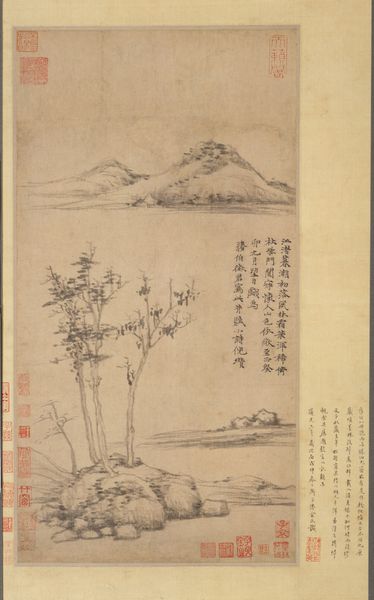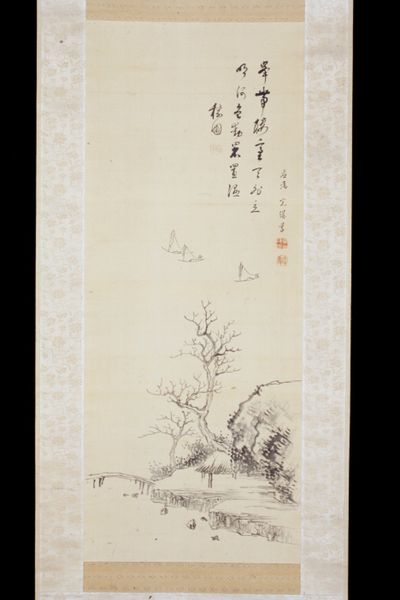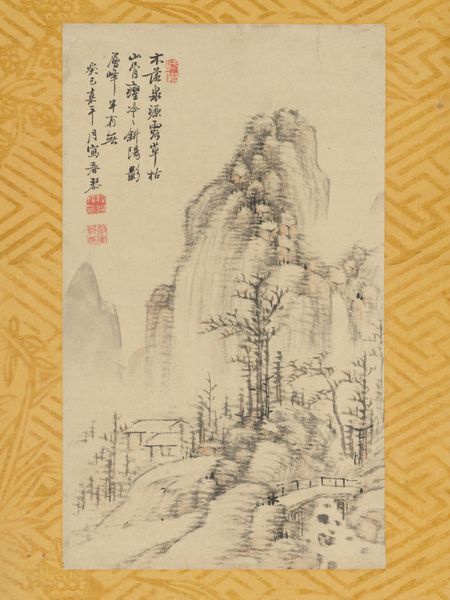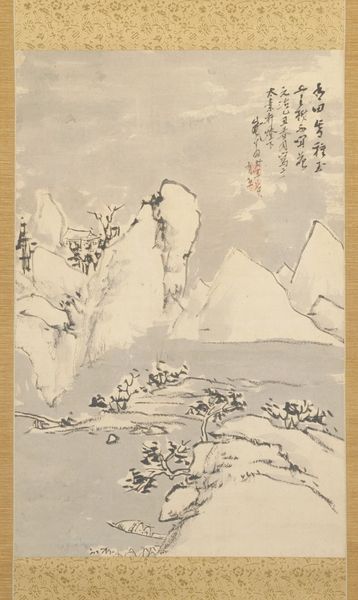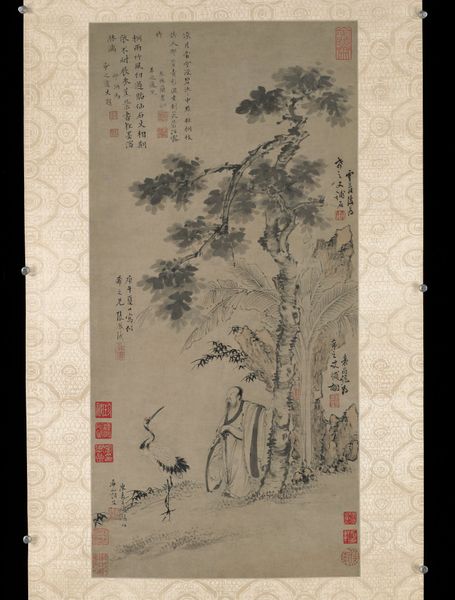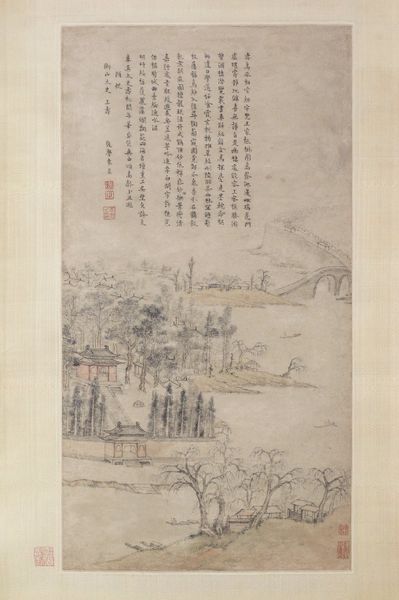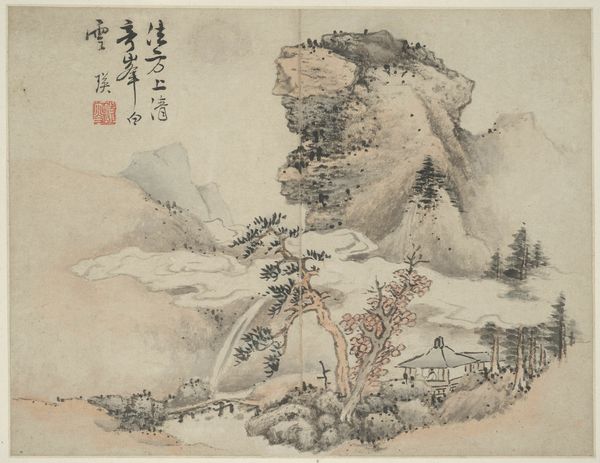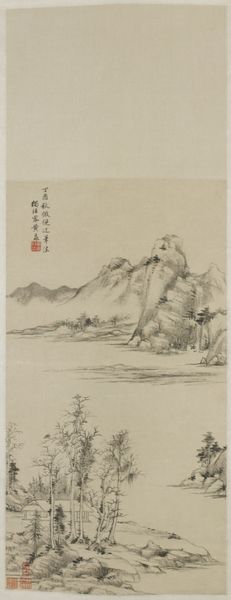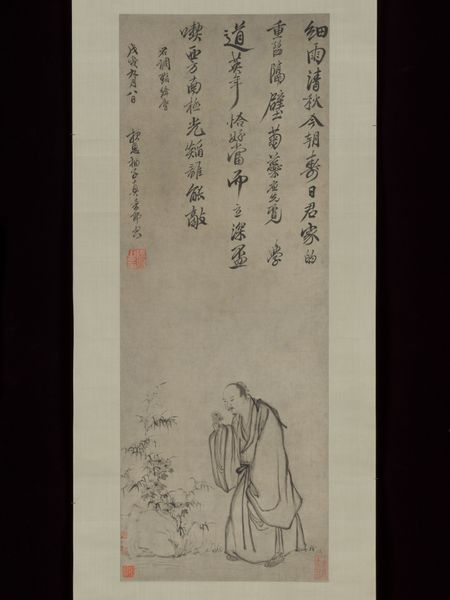
Dimensions: 26 1/16 x 10 9/16 in. (66.2 x 26.83 cm) (image)
Copyright: Public Domain
Editor: Here we have Inoue Kinga's "Drifting in a Small Boat," an 18th-century ink-on-paper hanging scroll from the Minneapolis Institute of Art. I am immediately drawn to the contrast between the bold calligraphy at the top and the delicate landscape below. How do you interpret the relationship between these two distinct visual elements? Curator: The success of the piece is embedded within that very tension. Note how the assertive, almost aggressive brushstrokes of the calligraphic text counterbalance the softer, more atmospheric rendering of the landscape. It is through this calculated contrast, where the materiality of the ink performs equally on both halves of the artwork, that the image thrives. The calligraphic element ceases to be mere addition, becoming integral to the spatial dynamics. Editor: I see what you mean. So it’s not just about representation, but also about how the ink itself creates depth and structure. Curator: Precisely. Observe the way the artist uses varying densities of ink wash to define the planes of the landscape. Darker, concentrated areas create the illusion of mass and proximity, while lighter washes recede into the background, forming a sense of depth despite the limited tonal range. Do you see how the rock formation seems to jut out into the space? Editor: Yes, and it's echoed in the strokes of the characters above it! The piece certainly encourages a deeper contemplation of space and surface. Curator: It reveals how through material relationships an artist could evoke perspective in the absence of linear perspectivalism. Editor: Thanks for highlighting that relationship; I had missed that before. Curator: It speaks to the rewards of considering formal aspects and the dialogue among parts in a work.
Comments
minneapolisinstituteofart about 2 years ago
⋮
Inoue Kinga made his living as a Confucian teacher at a private academy in Edo (Tokyo). As such, he was able to lead the ideal life of a literati artist--painting for pure self-expression rather than for profit. His paintings, accordingly, lack the polish of professional painter's, but have a purity and simplicity that more directly reflects his personality and poetic interests. Kinga painted this minimal landscape for his friend, Sanshi, to whom he refers in the poem: Drifting in a little boat with someone familiarThe waters of the lake have rippled for twenty years--I also enjoy the smoky haze from a rocky waterfall;Sand bars to the north and south form a road to meet my friend.
Join the conversation
Join millions of artists and users on Artera today and experience the ultimate creative platform.

